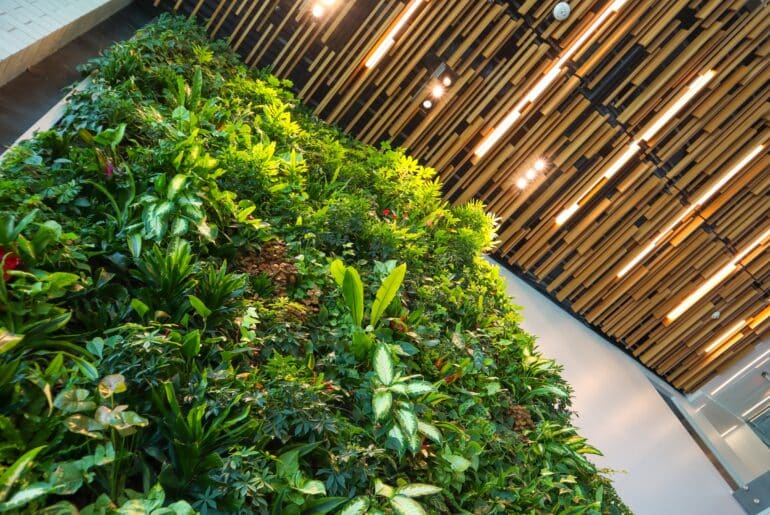The AEE West Energy Conference & Expo brings together professionals in the energy engineering industry to share cutting-edge energy efficiency and tech-based solutions from the commercial, industrial, and government sectors. Attracting leaders from Silicon Valley, the conference homed in on innovative ways to address key energy issues from the tech center.
Here, we share five big ideas and innovations from the conference for other energy and building professionals to apply to their own work:
#1: THE NEXT GENERATION OF ENERGY ENGINEERS REQUIRES MENTORSHIP
When we think about innovation, we often look to the new design strategies and technologies in our fields. But what about future leaders? Putting a spotlight on mentorship, Sol Rosenbaum of GSR Group dove into how he started training and developing other energy engineers to prepare for the next generation of leadership in energy innovation.
First, be available when you can, and more importantly when you can’t. Always find time. Share your knowledge and challenge your mentee with questions and accountability. Finally, accept that failure is a productive part of the process. Support your mentee through the hardship and frame it as a learning experience.
While there are endless enriching benefits to the mentor in the form of pride and avenues for teaching, mentoring at its core is an innate responsibility of all leaders in the field to “pay it forward.” Without guiding and inspiring others, the future of the industry is dimmed.
#2: ZERO ENERGY DOES NOT EQUAL ZERO CARBON
While Zero Energy has been on the industry’s radar for many years now, Zero Carbon is a much more recent—and holistic—concept. As Cathy Higgins of New Buildings Institute noted, it’s important to understand that while intertwined, Zero Energy and Zero Carbon are not interchangeable terms. Beyond including embodied carbon impacts in calculations, Zero Carbon buildings require Zero Carbon grids. This means that while Zero Energy buildings can purchase power from grids that don’t source renewables, which is then offset by onsite renewables production, Zero Carbon buildings must source energy from Zero Carbon grids. This sets a higher bar for utility companies to be carbon-free and increase the adaptability of their infrastructure through wind and solar energy.
Luckily for California, the state regulator is pushing for Zero Carbon over Zero Energy, which incentivizes building owners to invest in Zero Carbon strategies and grids. While these investments may appear more costly upfront, when considering the holistic financial return of the benefits to employees in these high-performance spaces, the business case can be made for Zero Carbon buildings.
#3: THE FUTURE OF SMART BUILDINGS IS IoT
Rita Renner of California Energy Alliance and Eric Taylor of GreenNet advised that while the Internet of Things (IoT) is still fairly new to the building world, it will play a critical role in developing highly efficient buildings. Deploying IoT in the building design and energy management system enables SMART metering, allows for occupancy sensors, and integrates with gateways to seamlessly push data from sensors to the Cloud for building operators and/or engineers to analyze. Vendors like Siemens and Trane already offer energy management systems with machine learning capacity and AI-enabled problem diagnosis.
Despite all the opportunity in IoT, there are still plenty of challenges to overcome ahead of widespread implementation. Between cost, lagging IT infrastructure, and increasing concerns around cyber security, vendors need to provide solutions to building operators to ensure cost effectiveness and security when implementing IoT.
#4: WHEN IT COMES TO PUMPS, TWO PARTS ARE NOT BETTER THAN ONE
Pump manufacturers like Armstrong Fluid Technology are coming up with an exciting new way to combine VFD (Variance Frequency Drive) and pump controls. Not only will this innovation result in quicker installation practices and fewer controls, but also significantly reduce the cost of labor and streamline the manufacturing process to include only one supplier. In addition, these pumps enable seamless information sharing by only requiring one point of contact for data analysis. Who wouldn’t be pumped for that?
#5: SURPRISE! YOU’RE HAVING *DIGITAL* TWINS…
Among the futuristic ideas at play at the conference was the concept of digital twins, discussed in depth by Siemens and Trane. A digital twin is a virtual replicate of a physical building that can act as a test lab and simulator for existing building system upgrades that would be difficult or inefficient to perform on the physical building. While this may sound like simple information modeling, a digital twin provides a far more comprehensive analysis of building performance and will enable simple, seamless implementation of the changes from the virtual to physical space, as well as instantaneous data analytics in the opposite direction.
This concept lies at the bleeding edge of energy engineering and relies on technology to evolve for seamless translation between the physical and virtual world before realistically taking root in building systems. Needless to say, it will completely disrupt building performance tactics once feasible.
Want to chat energy efficiency, energy initiatives, and clean energy technology? Reach out to our engineers!


